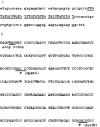Tendon and ligament injuries: the genetic component
- PMID: 17261551
- PMCID: PMC2658952
- DOI: 10.1136/bjsm.2006.033035
Tendon and ligament injuries: the genetic component
Abstract
Tendons and ligaments within the upper and lower limbs are some of the more common sites of musculoskeletal injuries during physical activity. Several extrinsic and intrinsic factors have been shown to be associated with these injuries. More recently, studies have suggested that there is also, at least in part, a genetic component to the Achilles tendon, rotator cuff and anterior cruciate ligament injuries. However, specific genes have not been suggested to be associated with rotator cuff or anterior cruciate ligament injuries. Sequence variants of the tenascin C (TNC) gene, on the other hand, have been shown to be associated with Achilles tendinopathies and Achilles tendon ruptures, whereas a variant of the collagen V alpha 1 (COL5A1) gene has also been shown to be associated with Achilles tendinopathies. Both genes encode for important structural components of tendons and ligaments. The COL5A1 gene encodes for a component of type V collagen, which has an important role in regulating collagen fibre assembly and fibre diameters. The TNC gene, on the other hand, encodes for TNC, which regulates the tissue's response to mechanical load. To date, only variants in two genes have been shown to be associated with Achilles tendon injuries. In addition, although specific genes have not been identified, investigators have suggested that there is also a genetic component to both rotator cuff and anterior cruciate ligament injuries. In future, specific genotypes associated with increased risk of injury to specific tendons and ligaments can prevent these injuries by identifying individuals at higher risk.
Conflict of interest statement
Competing interests: None.
References
Publication types
MeSH terms
Substances
LinkOut - more resources
Full Text Sources
Other Literature Sources
Medical
Miscellaneous


